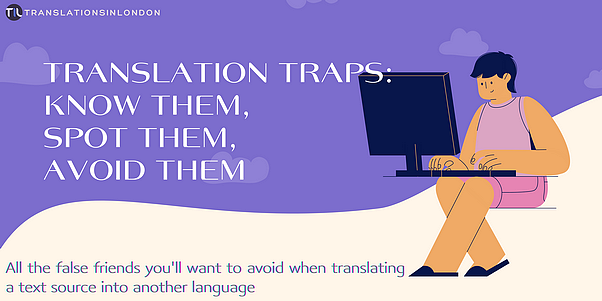In 1980, a hospital in Florida lost $71 million in a lawsuit after making a wrong diagnosis caused by a mistranslation. How? They failed to understand the family of a patient in a coma when they told them in Spanish that the said patient was “intoxicado”. Had a professional translator been there, they would’ve told the hospital that it meant that the patient had eaten or drank something bad, but there was no linguist around and the doctors deducted that it quite literally meant “intoxicated”. Believing the patient suffered from drug or alcohol intoxication, the doctors mistreated them – a typical case of tricky false friends that ended up being quite a costly language trap for the hospital.
Even though the consequences of such a mistake would not be as harsh for a translator or interpreter, it could still affect not only their payment but also the trust their clients put in them. In a profession that requires to switch up languages daily, it is easy to start mixing up some words because of their similarity from one dialect to another, and these subtle mistakes can even escape the most vigilant translators. Actually called “false friends of the translators” (Koessler and Derocquigny, 1928), these deceiving words are all the more dangerous given that they are often hard to spot. Here’s a clear list of different false friends identified by translation studies that might help you identifying them more easily during your future proofreadings:
Homonyms
As seen at the beginning with the case of the “intoxicado” patient, the homonyms types of false friends are quite common and refer to words that have similar spelling or pronunciation but different meanings. This type of false friends can lead to the most confusing situations since the homonyms can sometimes have almost opposite meanings and their similarity is purely coincidental, such as with “patrons” which in French actually means “boss”.
There are many other tricky French homonyms, for example “blesser” which actually means “to wound”, “car” which means “bus”, or even “pain” which means “bread”… Luckily most of them can be found listed here.
Etymological similarity
Some words are not only deceiving because they are similar, but also because that similarity is not coincidental at all. They can sometimes share the same etymological origins without sharing the same meaning. Despite having a common origin, those words can have evaluated overtime and developed a different semantic aspect by shifting meaning to various extents. Referred to as “cognates”, these are the hardest false friends to spot as their shared origins give a false sense of security to the one using them.
In spite of that common etymology, a word such as “fastidious” which means “meticulous” in English is very different from its Roman variants where it taken the meaning “boring” or “tiresome”, which once almost provoked a diplomatic accident when an English-speaking person called a Spanish delegate’s speech fastidious which was misunderstood at the time (Chamizo Dominguez, 2012).
Other cognates with tricky meanings to be watched out for are “librairie” in French or “libreria” in Italian which mean bookshop.

Loan or Pseudo-Anglicisms
This type of false friends refers to words that have been borrowed from one language to another without preserving its meaning. Despite being made up of imported English elements to make up for a lexical gap or for other cultural reasons, these words have gone through a strong semantical shift and are not to be mistaken with the original English words anymore.
There are many words borrowed from the English language in French and more often than not, they do not share the same meaning. These borrowings called “anglicisms” can be words with a semantic that has only slight shifted such as with “biscuit” in French which means sponge cake, or they can also be simple shortenings of the original word such as with “foot”.

Last type of false friends
Finally, in an unexpected turn of events, there is one last type of false friends that represent no threat to translators as they involve no written words – non-verbal false friends. Even though they do not fall under the type of mistakes that a translator needs to avoid during their project, it is still useful to be aware of how diverse non-verbal communication can be from one country to another. Being acutely aware of the diversity of cultures from one country to another is, after all, one of the duties of translators as it is necessary when it comes to localization. If a translator was ever to encounter some non-verbal communication in their works, pieces of knowledge such as the fact that thumbs up are actually considered as a negative sign in some parts of the Middle East might come in handy. In the same way, a single nod in the Black Sea region means “no” whilst a shake of the head means “yes”.
Conclusion: How to avoid them
As with many other aspects of the work of translation, the only way to avoid false friends involves research. There are no quick tricks to spot these deceiving words other than looking them up and studying the comparative listings of them that have already been categorized. Studying listings such as this one is the only way for a linguist to familiarize with these languages traps in order to be able to easily identify them in later projects.
If you want a second look on your project to avoid false friends or other mistakes, do not hesitate to reach out to us for our proofreading services!


